Introduction to the Golden Husky: A Fusion of Friendship and Freedom
The Golden Husky aka Goberian, stands as a testament to the beauty and diversity of mixed-breed dogs, embodying the best qualities of its parent breeds—the Golden Retriever and the Siberian Husky. Known for their striking appearance, friendly demeanor, and vibrant energy, Golden Huskies are not just pets; they’re companions for adventures, big and small.
This guide aims to peel back the layers of this fascinating breed, offering insights into their origins, characteristics, and how to care for them. Whether you’re a seasoned dog owner or contemplating the idea of bringing a furry friend into your life, understanding the Husky Golden Retriever Mix is the first step towards a rewarding journey together.
Key Takeaways:
-
Unique Blend: The Golden Husky is a mix between the Golden Retriever and the Siberian Husky, offering a unique combination of traits from both breeds.
-
Family-Friendly: Known for their loving and gentle nature, they make excellent family pets, getting along well with children and other animals.
-
Active Companions: They possess a high energy level, requiring regular exercise to stay healthy and happy.
-
Distinctive Looks: With their varied coat colors and eye colors, including the possibility of having one blue and one brown eye, Golden Retriever Husky puppies stand out in the canine world.
-
Intelligent and Trainable: Inheriting the intelligence of both parent breeds, Golden Huskies respond well to training, though they appreciate a patient and consistent approach.
As we delve deeper into the world of Golden Husky dog breed, keep these key takeaways in mind. They highlight not just the breed’s physical and emotional appeal, but also the responsibilities that come with owning such a dynamic and spirited dog.
Understanding the Golden Husky
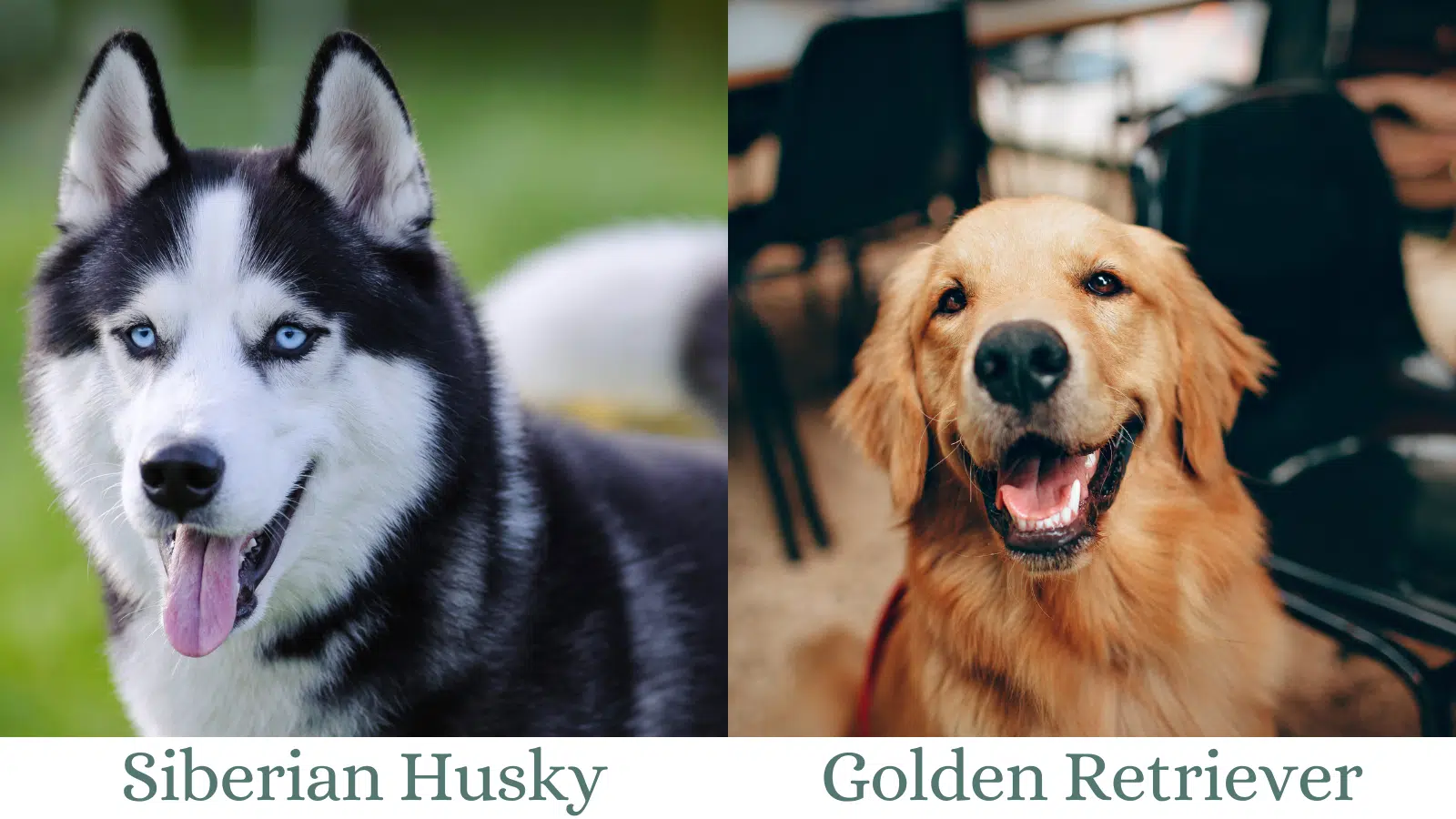
Goberian: Golden Husky Mixed Breed Dog
Origins and History: Delving into the Parent Breeds of the Goberian
The Goberian, a blend of the Golden Retriever and Siberian Husky, inherits its rich and varied characteristics from two breeds with fascinating backgrounds and distinctive physical traits.
Golden Retriever: The Quintessence of Friendliness and Versatility
-
Origin: Scottish Highlands, late 1800s.
-
Purpose: Initially bred for retrieving game, now also excels as service dogs and family pets.
-
Physical Characteristics:
-
Medium to large size, with a sturdy, muscular build.
-
Dense, water-repellent outer coat in various shades of gold.
-
Kind, expressive eyes, often in warm brown tones.
-
-
Traits: Known for intelligence, gentle demeanor, and an adaptable nature.
-
Versatility: Known for their adaptability, serving in various capacities beyond hunting companions.
Siberian Husky: A Legacy of Strength and Independence
-
Origin: Northeast Asia, bred by the Chukchi people.
-
Purpose: Bred for endurance sled pulling in harsh climates.
-
Physical Characteristics:
-
Medium size, with a lighter build than the Golden Retriever.
-
Thick double coat, with a wider range of colors and striking facial masks.
-
Notable for their almond-shaped eyes, which can be blue, brown, or heterochromatic.
-
-
Traits: Combines a strong work ethic with a friendly yet independent temperament.
-
Character: Combines a strong work ethic with a gentle temperament.
The Golden Husky is more than just a mixed breed; it’s a symbol of the harmonious blend of two of the most beloved dog breeds worldwide. To fully appreciate the essence of the Golden Husky, it’s crucial to delve into what exactly this breed represents and why it has captured the hearts of dog lovers everywhere.
Definition and Breed Overview
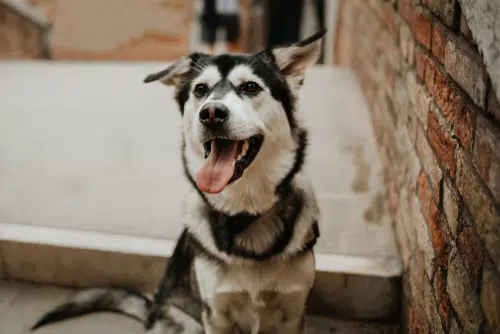
The Golden Retriever Husky is a mixed breed dog combining a purebred Golden Retriever and a purebred Siberian Husky. This intentional mix aims to combine the friendly and reliable nature of the Golden Retriever parent with the resilient and adventurous spirit of the Siberian Husky. The result is a dog that embodies the qualities of both breeds, with its own unique set of characteristics.
Understanding Generations of Breeding: The Goberian Example
When delving into the world of mixed-breed dogs like the Goberian, a blend of Golden Retriever and Siberian Husky, it’s essential to understand the concept of breeding generations. These generations are denoted as F1, F2, F3, and so on, providing insight into the dog’s lineage and the mix of breeds in their background.
F1 Generation
-
Definition: The first generation (F1) Goberians are the direct offspring of a purebred Golden Retriever and a purebred Siberian Husky.
-
Characteristics: F1 Goberians inherit 50% of their genetic makeup from each parent, leading to a wide variety of traits. Physically, they might display a mix of coat colors and textures, ranging from the Golden Retriever’s golden hue to the Husky’s grey, black, and white. Temperamentally, they can exhibit a balance between the Retriever’s friendly nature and the Husky’s independence.
-
Predictability: This generation has the most variability in terms of physical appearance and behavior because the genetic contribution from each breed is equally mixed.
F1b Generation
-
Definition: An F1b Goberian results from breeding an F1 Goberian back to one of the original purebred parents, either a Golden Retriever or a Siberian Husky.
-
Characteristics: This backcross aims to enhance specific traits from one breed, such as the Golden Retriever’s gentleness or the Husky’s striking appearance. For example, an F1 Goberian bred back to a Golden Retriever would be 75% Retriever and 25% Husky.
-
Predictability: F1b Goberians tend to have more predictable traits related to the purebred parent they are bred back to, making this generation appealing to those desiring more specific characteristics.
F2 Generation
-
Definition: F2 Goberians are the result of breeding two F1 Goberians together.
-
Characteristics: This generation can have a wide range of appearances and temperaments, much like the F1 generation, but with even more variability. The mixing of genes from two F1 parents can result in puppies that resemble one breed more than the other or display new combinations of traits.
-
Predictability: The F2 generation tends to have less predictability in traits than the F1 or F1b generations, as the genetic contributions from the original breeds can combine in many different ways.
Subsequent Generations (F3, Multigenerational)
-
Definition: F3 and beyond involve breeding F2 Goberians with other Goberians, or continuing the backcrossing process with purebreds.
-
Characteristics & Predictability: These later generations can stabilize certain traits, making the dog’s characteristics more predictable over time. However, achieving this consistency requires careful selection and breeding practices.
The Impact of Generations on Goberian Traits
Understanding these breeding generations is crucial for prospective Goberian owners. It helps in setting realistic expectations regarding the dog’s appearance, temperament, and health. Whether you’re drawn to the F1 generation for its diversity or prefer the more predictable traits of an F1b or later generations, recognizing the nuances of each can guide you in choosing the right Goberian companion for your lifestyle.
Breed Development
Pathway to Recognition by the American Kennel Club and the Progress of the Goberian
The American Kennel Club (AKC) sets a structured pathway for breed recognition, which ensures that a breed meets stringent criteria regarding consistency, health, and behavior. This process is designed to maintain high standards within the canine community, particularly for purebred dogs. However, the journey for mixed breeds like the Goberian, a cross between a Golden Retriever and a Siberian Husky, presents unique challenges and considerations.
Initial Steps Towards Recognition
For any breed seeking AKC recognition, the initial steps involve the formation of a dedicated breed club and the development of a comprehensive breed standard. This standard outlines the ideal physical traits, temperament, and other characteristics that define the breed. As of the latest information available, the Goberian, being a mixed breed, does not have a dedicated breed club or a formal breed standard recognized by the AKC or similar organizations. Mixed breeds often arise from the desire to blend the traits of two established breeds, rather than to create a new breed with the intention of achieving formal recognition.
Building a Consistent Breed Population
Another critical step on the path to AKC recognition is demonstrating a large, consistent population of the breed that adheres to the established breed standard across several generations. This consistency is crucial for ensuring that the breed maintains its unique characteristics and meets the AKC’s health and behavior standards. For the Goberian, this step is inherently challenging due to the natural variability in mixed breed populations. Each Goberian can inherit a wide range of traits from its Golden Retriever and Siberian Husky ancestors, making standardization difficult.
The Current Status of the Goberian
As mixed breeds, Goberians are celebrated for their unique combination of traits and individuality, rather than conformity to a single breed standard. While this diversity is a significant part of their appeal, it also means that the Goberian is not on a formal path toward AKC recognition. Instead, Goberians are appreciated within a community of mixed breed enthusiasts who value the blend of characteristics they inherit from their parent breeds.
The Future of the Goberian
The pathway to AKC recognition is structured around the principles of consistency, health, and standardized behavior, which poses a unique set of challenges for mixed breeds like the Goberian. While formal recognition may not be the goal for Goberian enthusiasts, the breed continues to thrive within a community that values its diverse and appealing traits. For now, the Goberian remains a beloved companion to many, celebrated for the joy and unique personality each individual dog brings to its family, rather than its status within formal breed registries.
The Appeal of Mixed Breeds
Mixed breeds like the Husky Golden Retriever mix are gaining popularity for several reasons. They often inherit the best traits of their parent breeds, leading to a dog with a balanced personality, good health, and striking looks. Additionally, mixed breeds can sometimes exhibit what is known as “hybrid vigor,” a phenomenon where crossbred animals show improved or enhanced qualities compared to their purebred counterparts.
The Golden Husky, with its diverse genetic background, offers potential owners the loyalty and intelligence of the Golden Retriever, alongside the Husky’s independence and energy. This combination makes them an excellent choice for active families, individuals looking for a loyal companion, or anyone in between who appreciates the unique beauty and temperament of mixed breed dogs.
In understanding the Golden Retriever Husky puppy, it’s essential to recognize the value of mixed breed dogs not just for their aesthetic appeal but also for their potential to be wonderful, loving pets. The Golden Husky stands as a prime example of how diversity within the canine world can lead to truly remarkable companions.
Physical Characteristics
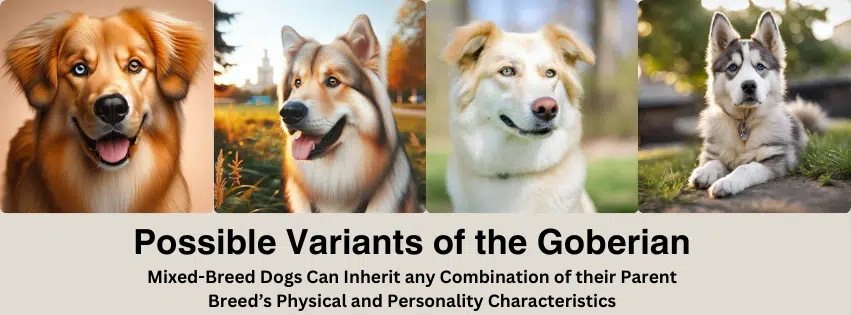
Goberian Golden Husky
The Golden Husky is a stunning example of the beauty that can emerge from the combination of two distinct dog breeds. Their physical characteristics are a blend of the Golden Retriever and the Siberian Husky, resulting in a range of appearances that make each Golden Husky uniquely captivating.
General Appearance and Size
Golden Huskies are typically a large dog breed that exhibit a robust and balanced physique, reflecting their active nature and working dog heritage. They usually stand between 20 to 24 inches tall at the shoulder and weigh anywhere from 35 to 75 pounds. However, due to the variability inherent in mixed breeds, some individuals may fall outside these ranges.
Coat Types and Color Variations
One of the most striking features of the Golden Husky is their coat, which can vary significantly in length, texture, and color. The dog’s fur may lean towards the dense, water-repellent quality of the Golden Retriever or the thick, double-layered coat of the Siberian Husky, designed for insulation against cold weather.
Unlike the consistent golden coat of their Golden Retriever parent, the Goberian’s coat color variations are vast, including shades of gold, cream, black, gray, and white, often mixed in fascinating patterns that reflect the rich genetic tapestry of this breed.
Eye Color and Distinctive Features
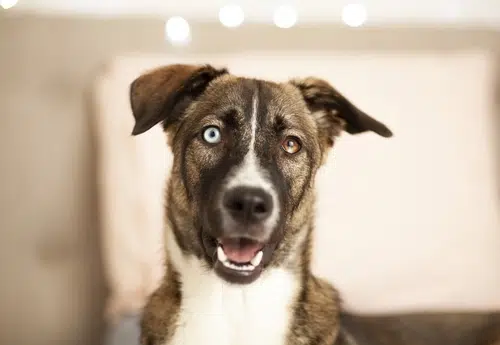
Perhaps one of the most enchanting traits of the Golden Husky is their eyes. They can inherit the warm, brown eyes of the Golden Retriever, the striking blue or even heterochromatic (two different colored) eyes of the Siberian Husky, or a combination thereof. This variability adds to the mystique and allure of the breed. Additionally, their ears can be either floppy or erect, and their tails may curl over their backs or hang down, further contributing to the diversity within the breed.
Understanding Trait Variability and Breeding True
The concept of “breeding true” is crucial when discussing the predictability of traits in purebreds versus the variability seen in mixed breeds like the Golden Husky. Purebred dogs have been selectively bred over generations to consistently exhibit specific traits. In contrast, mixed breeds inherit a diverse genetic makeup that can result in a wide range of appearances and behaviors, known as genetic variability.
This genetic diversity in mixed breeds like the Golden Husky can lead to what is known as “hybrid vigor,” potentially reducing the risk of certain genetic disorders and resulting in a healthier, more robust dog. However, it also means that predicting the exact size, coat type, and temperament of a mixed breed puppy can be challenging. For potential Golden Husky owners, this variability requires flexibility and an open mind, as their puppy may grow up with characteristics that are a unique blend of its parent breeds.
The physical characteristics of the Golden Husky not only showcase the breed’s stunning beauty but also highlight the delightful unpredictability and diversity that mixed breed dogs bring into our lives. Each Golden Husky is a unique masterpiece, blending traits of the Golden Retriever and Siberian Husky into a single, lovable companion.
Personality and Temperament
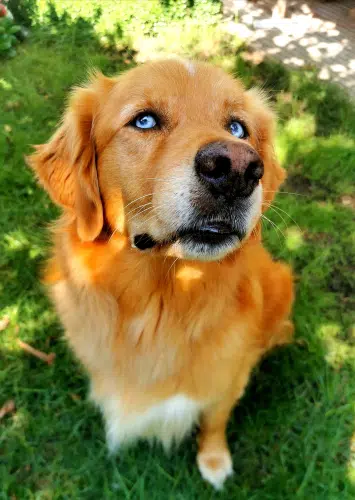
The Golden Husky inherits a rich tapestry of personality traits from its parent breeds, making it a complex and fascinating companion. Understanding the temperament of this mixed breed is key to fostering a harmonious relationship between pet and owner.
General Temperament
Golden Huskies are known for their friendly and outgoing nature, a trait they inherit from both the Golden Retriever and the Siberian Husky. They exhibit a joyful zest for life, often displaying a playful and energetic demeanor that makes them excellent companions for active individuals , energetic dogs and families. Their intelligence and eagerness to please, coupled with a dash of the Husky’s independent streak, make for a pet that is both engaging and sometimes challenging to train.
Compatibility with Families and Children
One of the most appealing aspects of the Golden Husky is its compatibility with families, including those with young children. They are generally very gentle and patient, making them fantastic playmates for kids. However, due to their size and their high energy levels, supervision is recommended during interactions to ensure play remains safe and enjoyable for both parties.
Interaction with Other Pets
Golden Huskies typically get along well with other pets, especially when socialized from a young age. Their sociable nature means they often enjoy the company of other dogs, and their playful spirit can make them good companions for another active dog. However, their interaction with smaller animals should be monitored, as the Husky’s prey drive may sometimes surface.
The Importance of Socialization and Training
Given their blend of intelligence and independence, Golden Huskies benefit greatly from early socialization and consistent training. Exposing them to a variety of people, pets, and environments from a young age helps develop a well-adjusted and confident adult dog. Training should be approached with patience and positive reinforcement, as Golden Huskies respond best to rewards-based methods. Challenges in training may arise from the Husky’s independent nature, but with consistency and understanding, these can be effectively managed.
Golden Huskies are not just pets; they are loyal friends and adventurous companions. Their multifaceted personalities and adaptable temperaments make them suitable for a variety of homes and lifestyles. Whether you’re looking for a hiking partner, a family playmate, or a loyal friend, the Golden Husky’s blend of traits offers something special for everyone.
Health and Lifespan
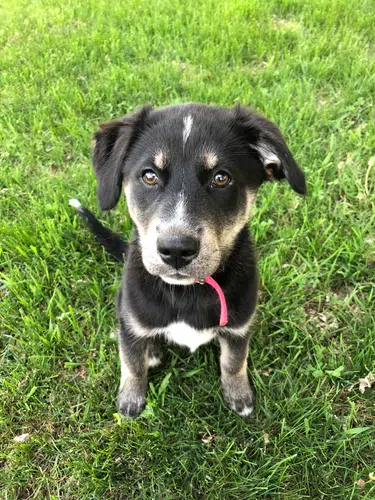
The health and wellbeing of a Golden Husky are paramount considerations for any prospective or current owner. This mixed breed benefits from the genetic diversity of its parentage, potentially leading to a robust constitution. However, like all dogs, Golden Huskies are prone to certain health conditions that owners should be aware of.
Possible Health Issues
Golden Huskies can inherit health issues common to both Golden Retrievers and Siberian Huskies. Some of these include hip dysplasia, a condition affecting the hip joint that can lead to arthritis or discomfort; eye conditions such as cataracts and progressive retinal atrophy; and heart diseases. Regular veterinary check-ups and a proactive approach to health care can help manage these conditions and ensure a quality life for your pet.
Lifespan and Factors Affecting Health
The average lifespan of a Golden Husky is around 10 to 14 years, which is relatively standard for dogs of their size. Factors that can influence their health and longevity include genetics, diet, exercise, and the quality of care they receive throughout their life. Providing a balanced diet, regular exercise, and preventive health care can significantly contribute to a longer, healthier life for your Golden Husky.
Preventative Care and Regular Health Checks
Preventative care is crucial in maintaining the health of a Golden Husky. This includes regular vaccinations, parasite control (fleas, ticks, and worms), and dental care. Annual health checks with a veterinarian can help catch and address potential health issues early. Additionally, spaying or neutering your pet can prevent certain diseases and unwanted behaviors, contributing to a healthier, happier life.
The Importance of Diet and Exercise
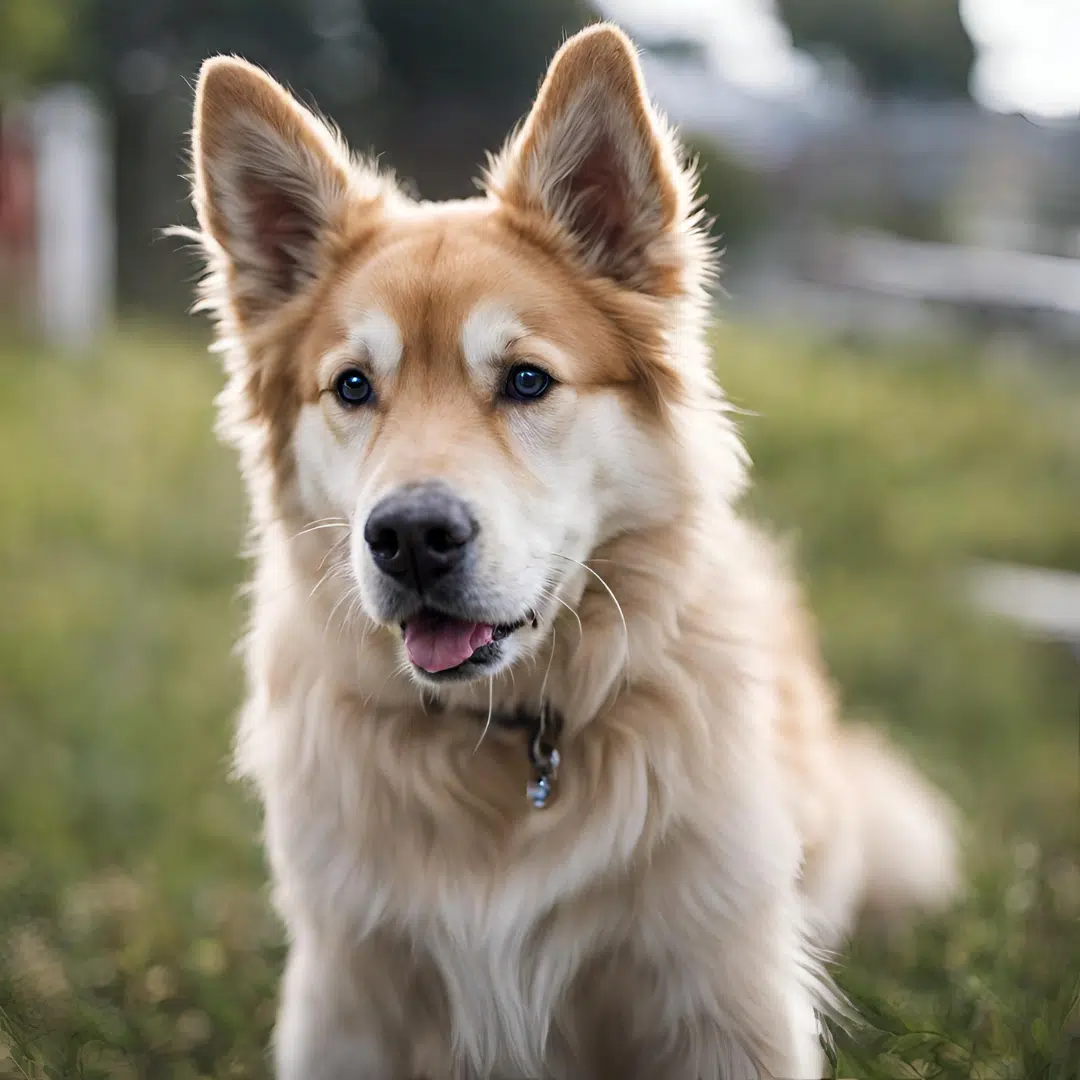
A balanced diet tailored to their life stage, size, and activity level is essential for the Golden Husky’s overall health. High-quality dog food that meets their nutritional needs can help prevent obesity, which is a common health concern that can lead to other serious conditions. Exercise is equally important; Golden Huskies are active dogs that require regular physical activity to keep them fit and prevent boredom-related behaviors. Activities such as walking, running, hiking, and playtime in a secure area can help meet their exercise needs.
Understanding and addressing the health needs of a Golden Husky are key to ensuring they lead a long, happy life. With the right care, diet, and exercise, Golden Huskies can be vibrant and loyal companions for many years.
Care and Maintenance

Caring for a Golden Husky goes beyond meeting their basic needs; it involves a commitment to their overall wellbeing. This section covers the essentials of nutrition, grooming, and exercise, ensuring your Golden Husky thrives in your care.
Nutritional Needs and Diet Recommendations
A well-balanced diet is crucial for your Golden Husky’s health. Opt for high-quality dog food that suits your dog’s diet, their age, size, and energy level. Considering their active nature, they may require more calories than less active breeds. Always have fresh water available, and consult with a vet for personalized dietary advice, especially if your dog has specific health needs.
Exercise Requirements and Activities
Golden Huskies are energetic and require daily exercise to stay healthy and happy. Aim for at least an hour of physical activity each day, including walks, runs, and play sessions. They also enjoy mental mental and physical stimulation so incorporate training exercises and puzzle toys to keep their minds sharp.
Grooming Essentials and Shedding Management
Regular grooming is essential to manage shedding and keep their coat in good condition. Brush your Golden Husky several times a week to reduce shedding and prevent matting. They typically require more frequent brushing during shedding seasons in the spring and fall. Additionally, routine care like nail trimming, ear cleaning, and dental care are important for their overall health.
Adoption, Costs, and Community Support
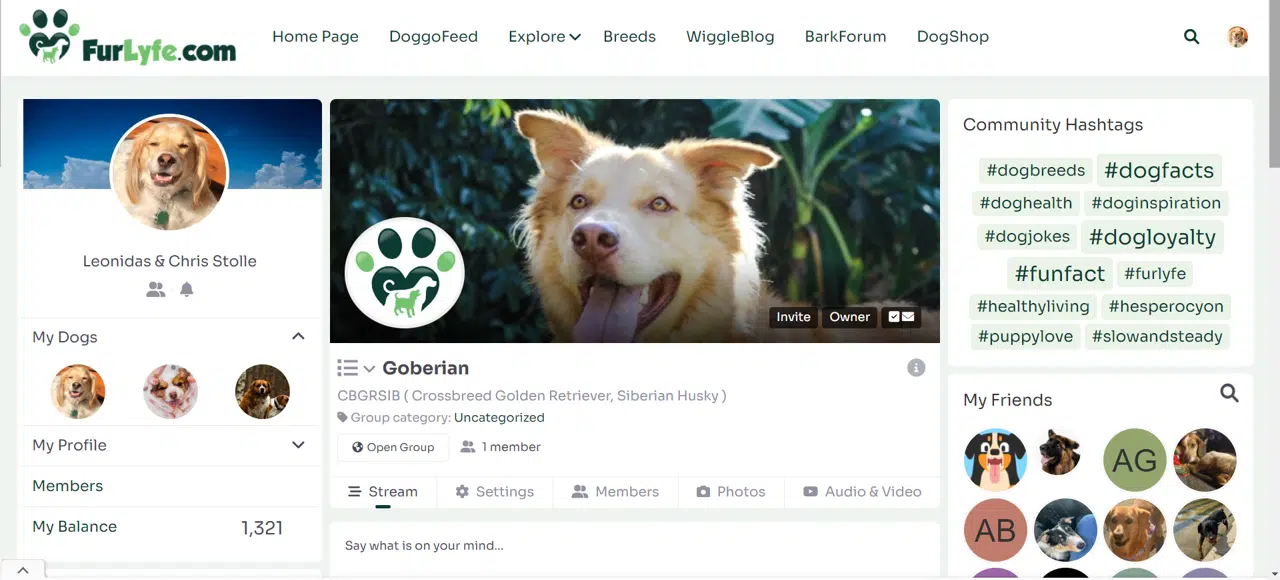
Adopting a Golden Husky is a rewarding experience, but it comes with its own set of considerations. This section provides guidance on adoption, the costs involved, and finding community support.
Where to Find Golden Husky Puppies
You can find Golden Husky puppies through reputable breeders or adoption centers. Research thoroughly to ensure you’re choosing a healthy, well-socialized puppy. Consider adopting from shelters or rescue organizations, where many mixed breeds await loving homes.
Initial Costs, Ongoing Expenses, and Budgeting
The cost of owning a Golden Husky includes initial expenses like adoption fees, vaccinations, and supplies, as well as ongoing costs for food, grooming, and healthcare. Budgeting for unexpected expenses, such as emergency veterinary care, is also important.
Online Communities, Local Clubs, and Resources
Joining online forums, local clubs, or social media groups can provide valuable support and advice from fellow Golden Husky owners. These communities are great resources for sharing experiences, training tips, and finding local services tailored to your dog’s needs.
There is a growing online demand for Siberian Golden Retriever mixed dogs. FurLyfe.com has groups specifically designed for mixed breed dogs. Check out the Goberian Group. Facebook has a vibrant group with over 3000 members regularly sharing pictures of their pups, and the Instagram #Goberiandog has hundreds of posts.
Golden Husky FAQs
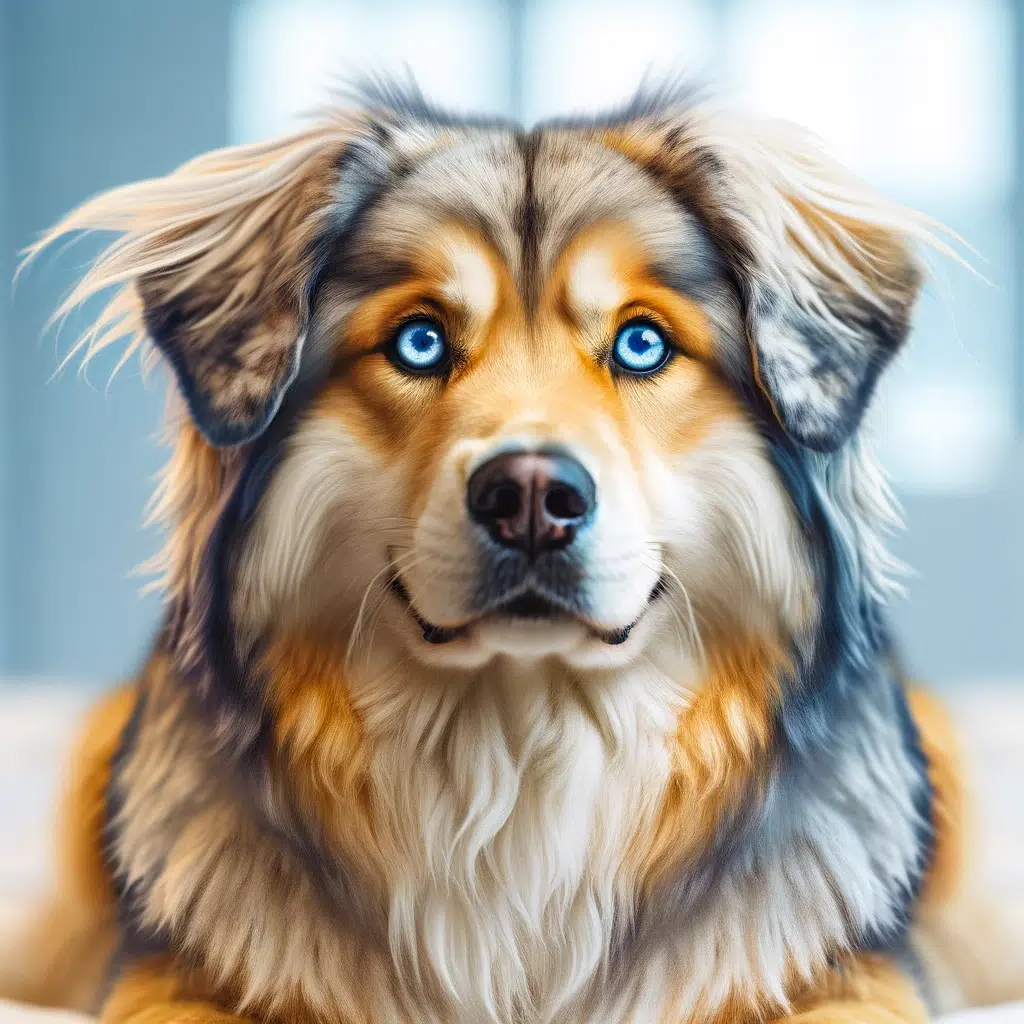
Is a Golden Retriever Husky mix a good dog?
Absolutely! The Golden Retriever Husky mix, known for its friendly demeanor, intelligence, and loyalty, makes an excellent companion for a wide range of families and individuals. They are particularly suited to those who can meet their needs for exercise, companionship, and mental stimulation.
What is a Golden Retriever Siberian Husky mix called?
This delightful mix is commonly referred to as a “Goberian.” The name combines elements of both parent breeds, highlighting the unique blend of characteristics they inherit from the Golden Retriever and the Siberian Husky.
Are Goberians rare?
While Goberians are becoming more recognized and sought after, they are still considered relatively rare compared to more established breeds. Their unique mix of traits and the growing interest in designer dogs have made them more popular, but finding a Goberian may require some research and patience.
Do Goberians bark a lot?
Goberians inherit their vocal tendencies from their parent breeds, which can vary. Siberian Huskies are known for being quite vocal, using howls and barks to communicate, while Golden Retrievers are generally more moderate in their barking. Goberians may bark to express themselves, alert their owners, or when they’re feeling playful. However, with proper training and socialization, excessive barking can be managed effectively.
Final Thoughts on Goberian Golden Husky Mixed Breed Dog

The Husky and Golden Retriever Mix is a unique blend of the Golden Retriever and Siberian Husky, offers an unparalleled combination of loyalty, intelligence, and adventurous spirit. These dogs are not just pets; they are companions for life, bringing joy, energy, and a touch of the wild into your home.
While they require dedication in terms of exercise, training, and socialization, the rewards of sharing your life with a Goberian are immeasurable. It’s important to note, however, that the Goberian is not recognized as a breed by the American Kennel Club (AKC), given its status as a mixed breed. This lack of official recognition does not diminish their value as loving and loyal companions; it simply underscores the unique and diverse nature of this remarkable mix.
Whether you’re an active individual seeking an adventurous partner or a family looking for a playful and protective member, the Goberian is a testament to the beauty and diversity of the canine world. Embrace the journey with a Goberian, and discover the endless love and adventure that awaits.
More Dog Breeds

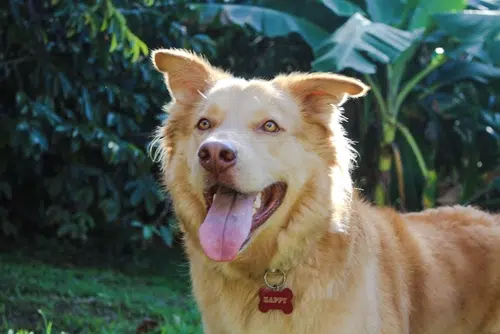
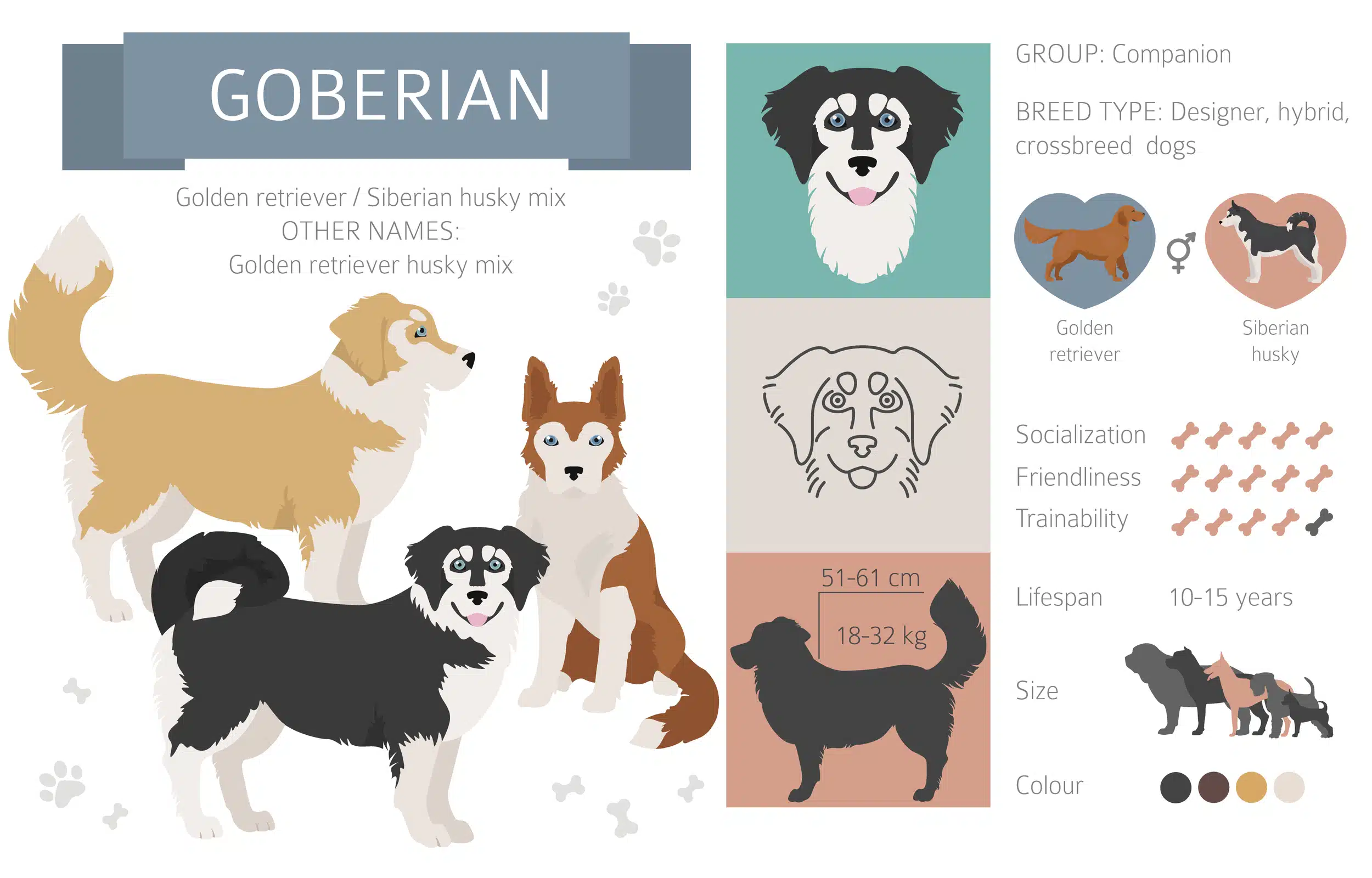
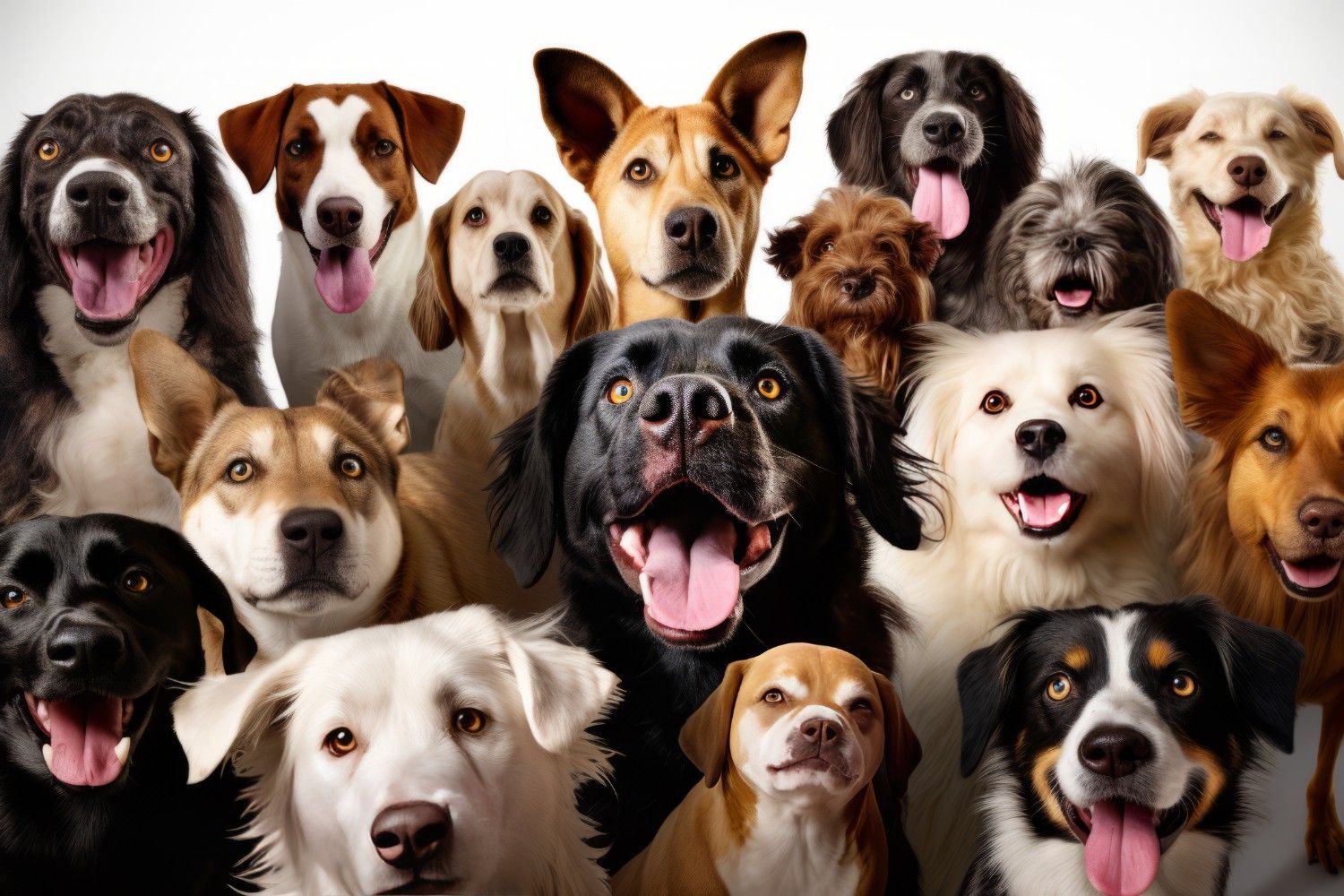

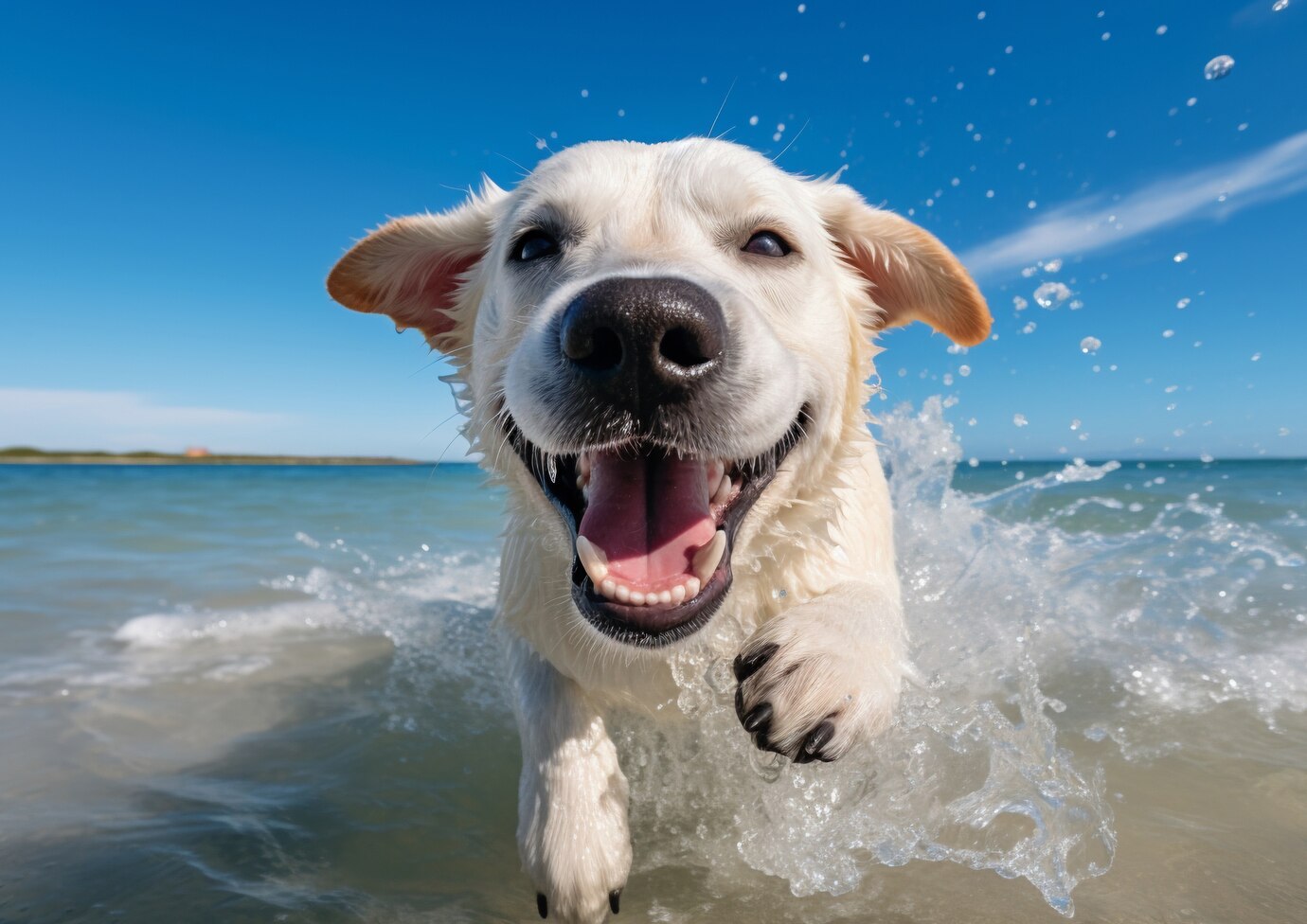
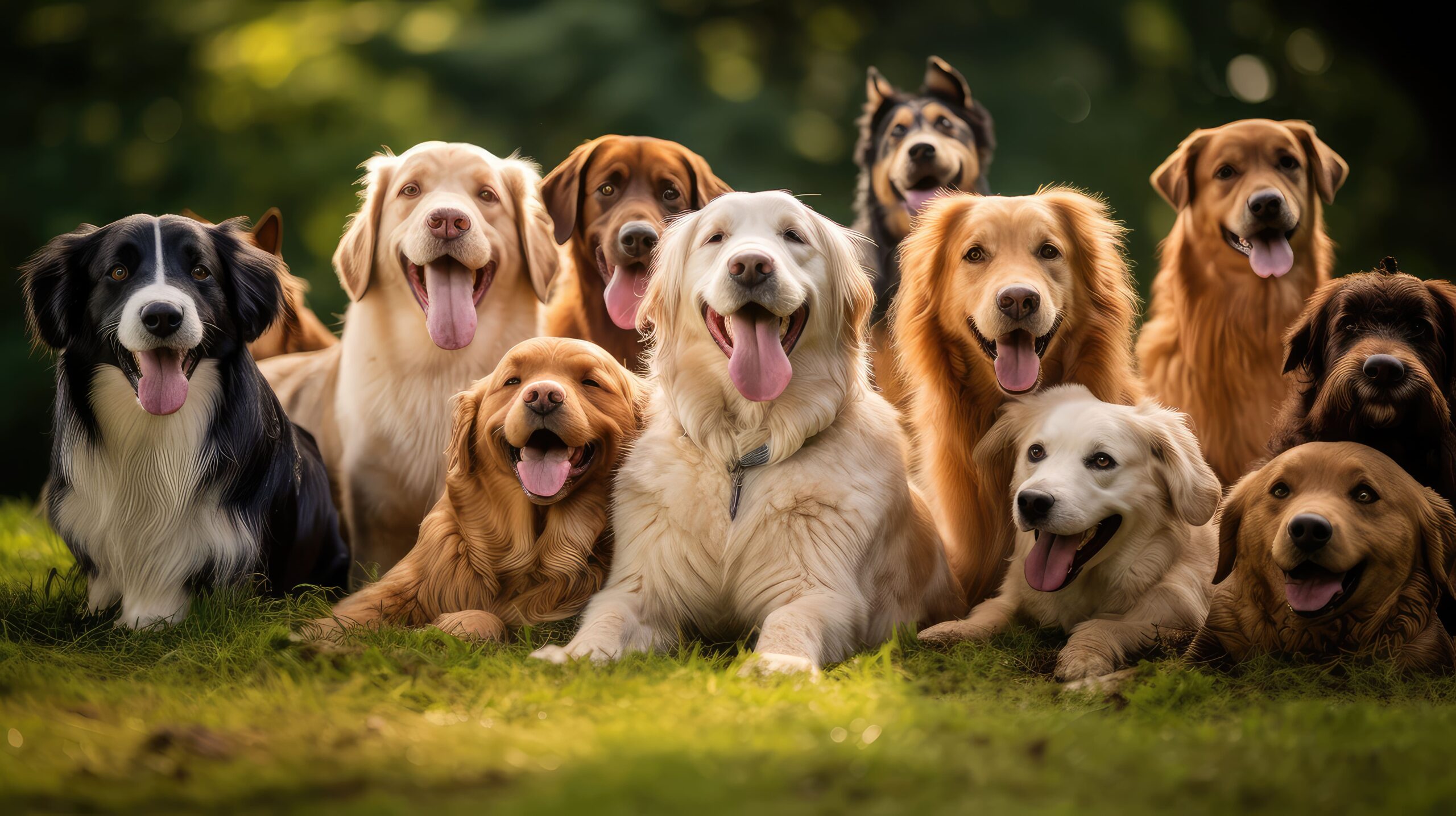

Get involved!
Comments